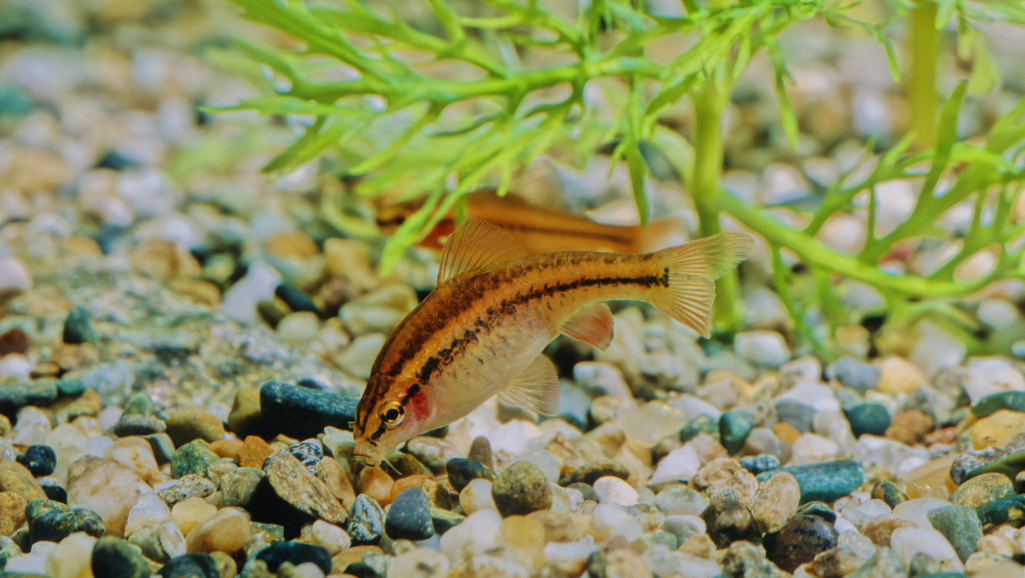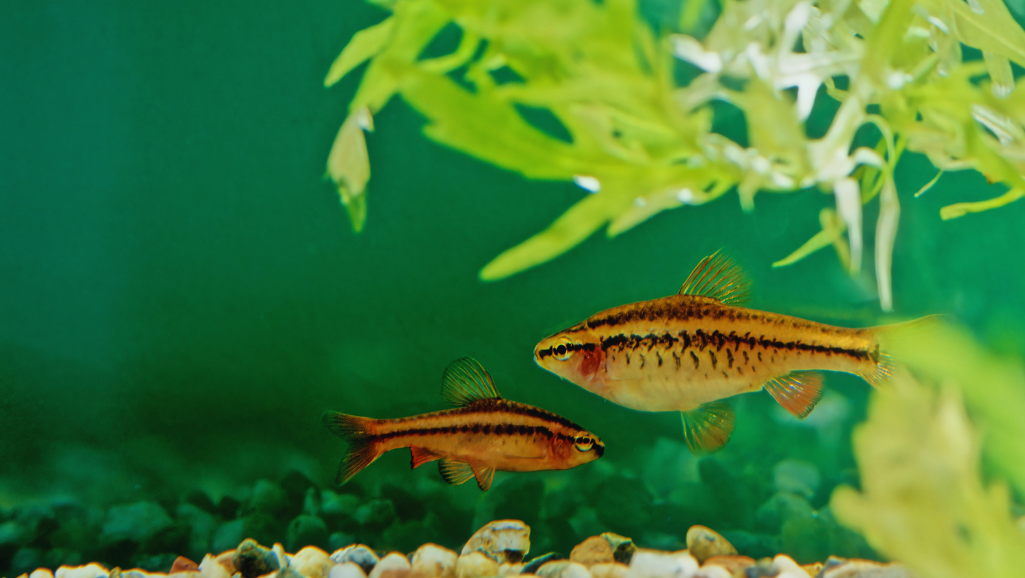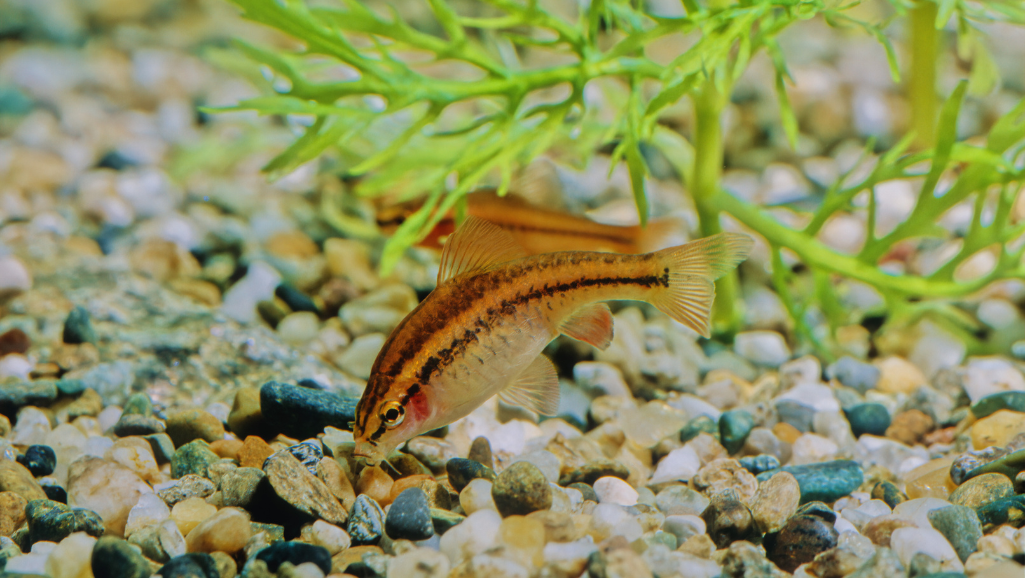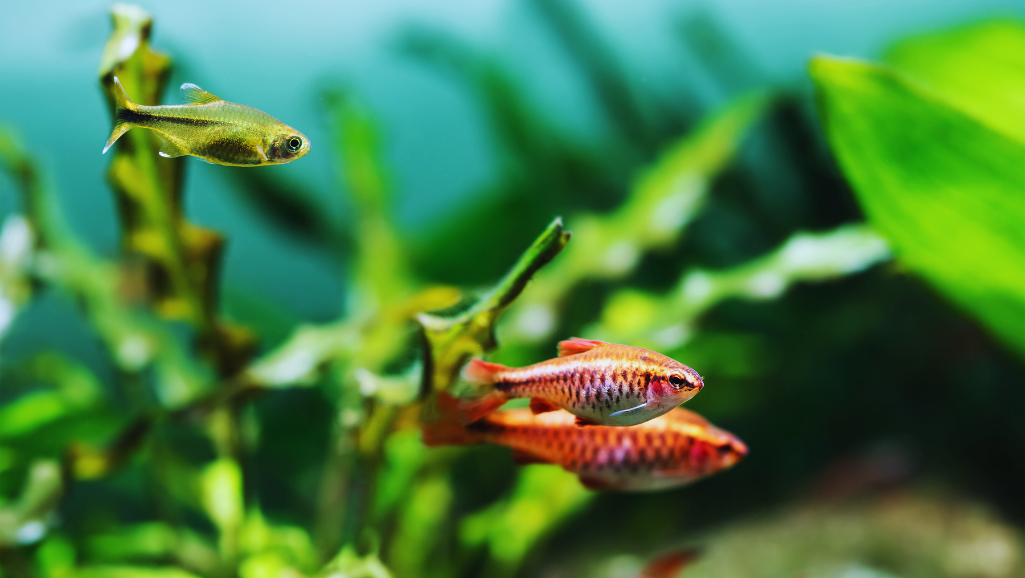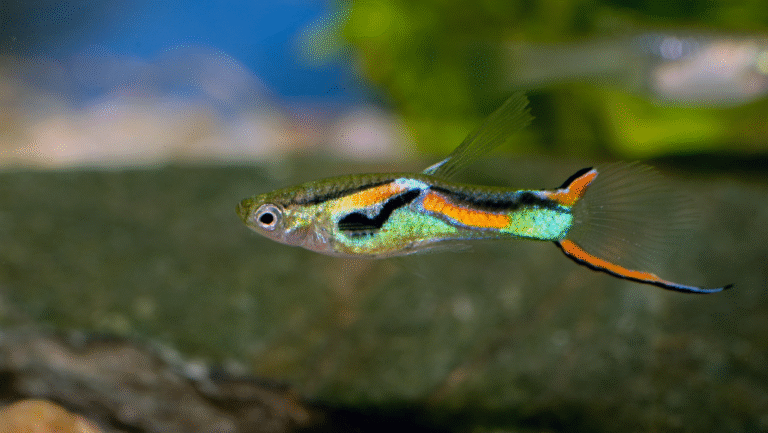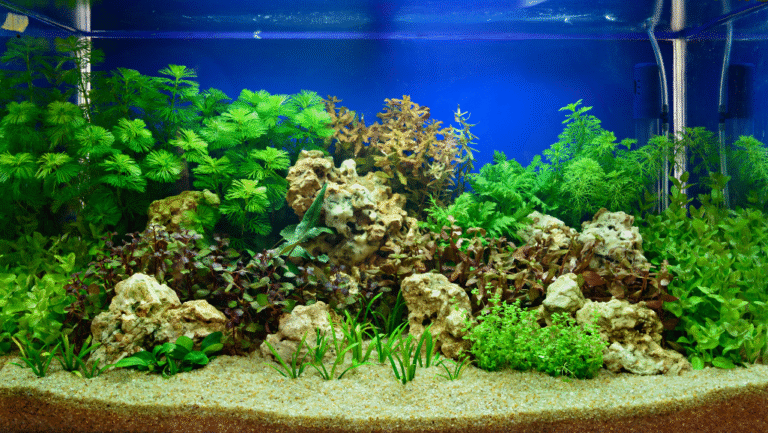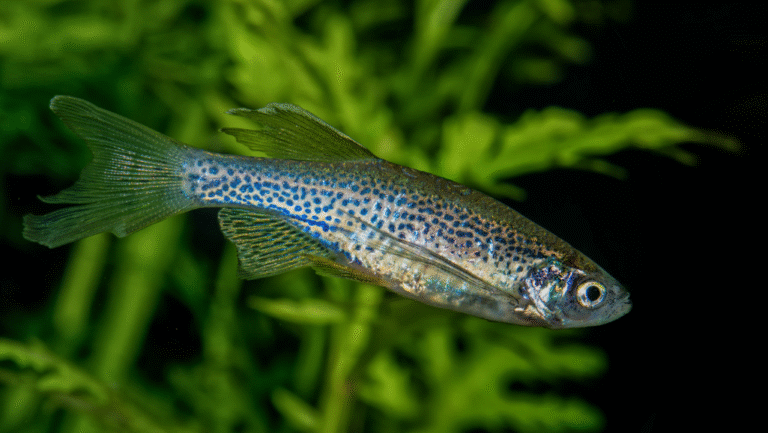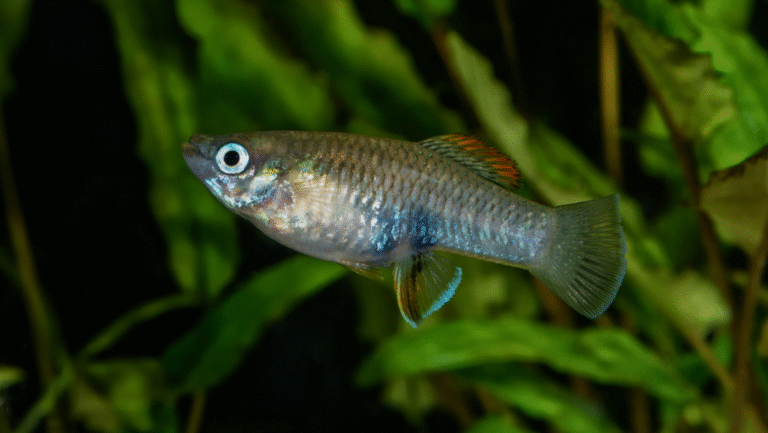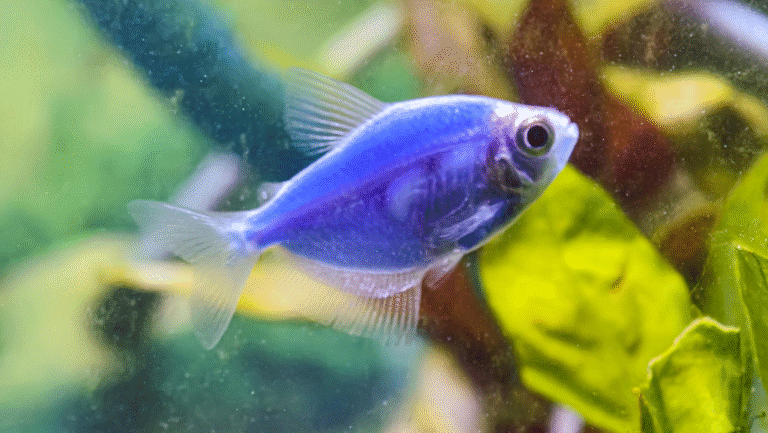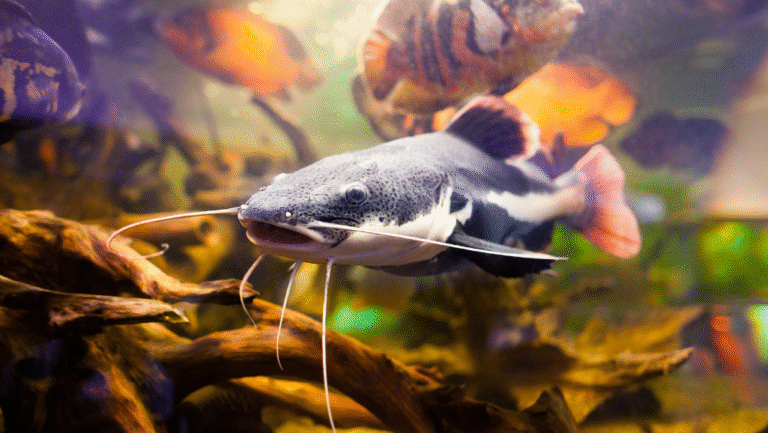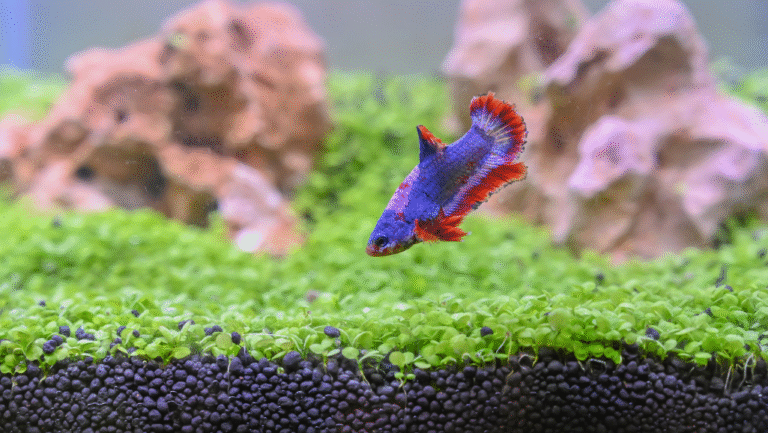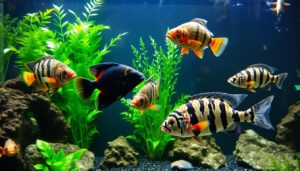The Cherry Barb fish are known for their bright red color and calm nature. They add beauty to any freshwater aquarium. To keep them happy, it’s important to understand their care and set up their tank right.
Cherry Barbs come from the rainforests of Sri Lanka. They need a tank that feels like their home. This means lots of plants, a dark bottom, and driftwood for hiding spots.
They are social fish and do best in groups of at least six. These groups need a tank of 10 gallons or more. A well-planted tank with plenty of hiding spots is key to their happiness.
Key Takeaways
- Cherry Barbs thrive best when kept in groups of 6 in tanks 10 gallons or larger.
- Mimic natural environments with live plants and dark substrates for successful Cherry Barb care.
- Maintain optimal water parameters with temperature ranging from 72–80°F and pH levels of 6.0–8.0.
- Offer a mixture of plant-based food and proteins to reflect Cherry Barbs’ omnivorous diet.
- Consider compatible species to ensure a tranquil community aquarium with Cherry Barb fish.
- Ensure the Cherry Barb tank setup is spacious and well-planted to support their schooling and breeding behavior.
Understanding the Cherry Barb: Behavior and Compatibility
The Cherry Barb is loved for its bright color and calm nature. It’s a great choice for keeping a peaceful tank. Knowing how they act and who they get along with is key to a happy aquarium.
Peaceful Nature and Community Tank Suitability
Cherry Barb behavior is known for being friendly. They like to play with each other but don’t bother other fish. This makes them great for living with other calm fish, like tetras and danios.
Identifying Male and Female Cherry Barbs
It’s important to tell male from female Cherry Barbs, especially when they breed. Males have a brighter cherry color, especially when they’re looking for a mate. Females are more tan and blend in better with the surroundings.
Why Cherry Barbs Are Different from Other Aggressive Barbs
Cherry Barbs are much calmer than some other barbs. They don’t nip at fins. This makes them perfect for tanks with other peaceful fish. They get along well with fish like cory catfish and plecos.
For more tips on keeping Cherry Barbs happy, check out this guide. Or learn more about caring for your aquarium.
| Parameter | Range/Info |
|---|---|
| Size | Up to 2 inches (5 cm) |
| Recommended Tank Size | 10 gallons for a group of 6 |
| Water Temperature | 72–80°F (22–27°C) |
| pH Range | 6.0–8.0 |
| Breeding Temperature | 80°F (27°C) |
| Fry Food | Infusoria, live vinegar eels, powdered fry food |
Knowing these details will help keep your Cherry Barbs happy. It will also make your time as an aquarist more enjoyable and successful.
The Optimal Aquarium Environment for Cherry Barbs
To create the best aquarium for Cherry Barbs, you need to know about their natural home. These colorful fish come from the slow-moving streams and rivers of Sri Lanka. Their waters are full of plants. To keep your Cherry Barbs happy and colorful, follow some important guidelines.
Replicating the Sri Lankan Rainforest Streams
In their natural home, Cherry Barbs love the shade of a forest canopy. This gives them soft light and lots of plants. Adding live plants like Java Fern and Hornwort makes the tank look great. It also gives them places to hide, which is important for their well-being.
Water Parameters: Temperature, pH, and Hardness
- Temperature: Cherry Barbs do well in temperatures between 72-80°F (22-27°C).
- pH Levels: The water pH should be between 6.0 and 8.0, like their natural water.
- Hardness: They prefer soft to moderately hard water. Keeping the water stable is crucial for their health.
Tank Size and Schooling Considerations
Cherry Barbs like to be in groups. A 10-gallon tank is good for a small group of up to six fish. If you add more Cherry Barbs, make the tank bigger. This helps prevent fights and keeps the environment peaceful.
Having more females than males helps too. Aim for a ratio of 1–2 females per male. This reduces stress and makes the colors of the fish more vibrant.
Setting up the right aquarium for Cherry Barbs is key. A good filtration system is essential for clean, oxygen-rich water. Keep an eye on the water parameters and make changes as needed. This will help your Cherry Barbs thrive and show off their beautiful colors and lively behavior.
Cherry Barb Dietary Needs for Vibrant Health
Keeping the Cherry Barb diet right is key for their health and color. They need a mix of foods to match their natural diet. Cherry Barbs are omnivores, so they eat both plants and proteins.
Cherry Barb feeding needs a balance of dry, frozen, and live foods. Nano pellets, daphnia, and spirulina flakes are good for their small mouths. Krill flakes and baby brine shrimp can make their red color pop, especially during spawning.
- Live Foods: Bloodworms, brine shrimp, and micro worms
- Frozen Foods: Mysis shrimp, daphnia
- Dry Foods: High-quality fish flakes, pellets for small fish
- Vegetables: Cucumber slices, zucchini, and peas (lightly blanched)
Feeding Cherry Barbs right is also important. Feed them two to three times a day in small amounts. This stops them from eating too much and keeps the tank clean. Here’s how different foods help them:
| Food Type | Benefits |
|---|---|
| Live Foods | Enhances natural hunting behavior, provides protein. |
| Frozen Foods | Convenient source of essential nutrients. |
| Dry Foods | Easy to feed, often fortified with vitamins and minerals. |
| Vegetables | Provides dietary fiber, aids in digestion. |
For a complete Cherry Barb diet, add blanched veggies sometimes. They help with digestion. Remember, it’s not just what they eat but how they eat it. A varied diet in the right amounts keeps them healthy and your tank clean.
Cherry Barb Tank Mates: Finding the Perfect Companions
Finding the right tank mates for Cherry Barbs is key to a peaceful aquarium environment. These colorful fish do best in groups. They should be with other calm fish that like the same water and space. Knowing Cherry Barb compatibility helps create a thriving community tank.
Top Compatible Species for Cherry Barbs
Cherry Barbs get along well with Neon Tetras, Dwarf Gouramis, and Kuhli Loaches. These fish like the same water and are calm, avoiding fights. Schooling fish like Zebra Danios or Tetras also make great Cherry Barb tank mates. They add life to the tank without causing trouble.
Special Considerations for Invertebrates and Smaller Tank Mates
Even though Cherry Barbs are calm, small invertebrates like shrimp need safe places. Make sure your tank has lots of plants and decorations for hiding. This not only keeps small fish safe but also makes the tank look better.
Configuring the Aquarium for Multiple Species
Setting up a tank for many species needs careful planning. A 30-gallon tank is a good size for a mix of fish. Include plants, different substrates, and caves to create natural habitats. Good filters and regular cleaning are also important for a healthy tank.
Talking to experts can help a lot with a multi-species tank. The goal is a balanced tank where Cherry Barb compatibility makes the aquarium beautiful and healthy. Check out this guide for tips on feeding and breeding Cherry Barbs.
Step-by-Step Guide to Breeding Cherry Barbs
Starting your journey in Cherry Barb breeding is exciting for both new and experienced fish keepers. This guide covers the basics of spawning and caring for fry to help you succeed.
Creating the Ideal Breeding Environment
To start Cherry Barb spawning, you need the right setup. Use a separate tank with fine substrates, moss, and catappa leaves. This helps them feel at home and encourages them to spawn.
The water should be slightly acidic, with a pH between 5.6 and 7.0. Keep the temperature steady at 74-81°F. This helps the eggs develop well.
Spawning Behavior and Egg Care
Cherry Barbs have a special way of spawning. They dance to signal the start of spawning. The female is usually larger because she carries the eggs.
It’s best to have two or three females for every male. This reduces stress and helps with fertilization. Females can lay up to 200 eggs. Keep these eggs safe in a breeder box to protect them from predators.
Keeping the water clean is key during this time. Change the water often and check the quality. This ensures the eggs and fry stay healthy. For more tips, see expert aquarium water maintenance guidelines.
Raising Cherry Barb Fry: Essential Tips
After hatching, Cherry Barb fry care is crucial. Start with infusoria or special shrimp food. Later, you can switch to baby brine shrimp as they grow.
Cherry Barbs grow fast, so keeping them separate helps prevent predation. They can grow up to 2 inches and live for 4 to 5 years. This makes them a great choice for breeding.
Regular care is essential. Cherry Barbs are easy to breed and are peaceful. They’re perfect for anyone starting to breed fish.
Conclusion
Creating a thriving Cherry Barb environment is more than just adding color to your tank. It’s about building a lively aquatic world. To keep your Cherry Barbs healthy, follow key Cherry Barb care tips. This includes keeping the water between 73-81°F and a pH of 6.0-8.0.
This balance is crucial for their well-being. It helps them thrive, just like in their natural habitats in Sri Lanka.
A successful Cherry Barb tank setup is not just about the water. It’s about creating a peaceful community. Cherry Barbs need to be in schools of at least six for their safety and natural behavior.
While they are generally calm, choosing the right tank mates is important. Tetras and Corydoras catfish are good choices for a friendly aquarium.
Cherry Barbs are great for both new and experienced fish keepers. They can even breed in your home tank. Their easy breeding and bright colors make them a joy to watch. For more tips on creating the perfect Cherry Barb home, check out this guide.
